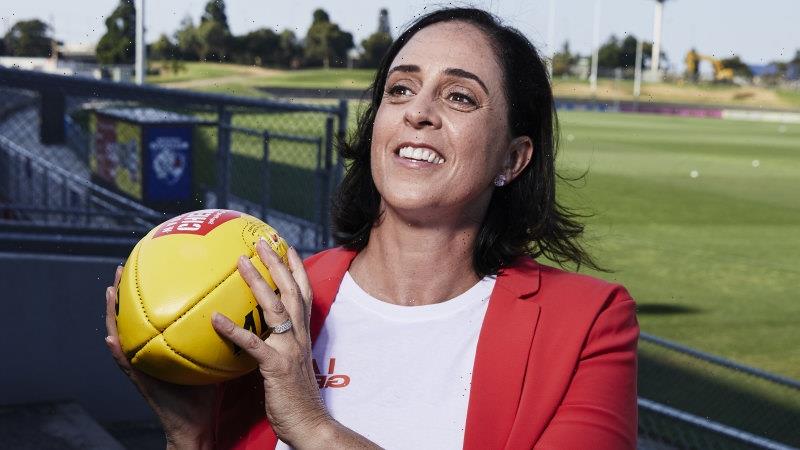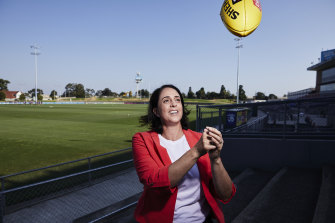For our free coronavirus pandemic coverage, learn more here.
It was the operation that allowed Nicole Livingstone to go to the Tokyo Olympics as a swimming commentator.
“It set me on my path to be able to be here in Tokyo to be really honest,” she said. “And I’m not in pain and that’s the biggest thing for me.”
Nicole Livingstone said having home rehab allowed her to recover in privacy and juggle her busy home and work life.Credit:Kristoffer Paulsen
But it was the home rehabilitation after her double partial knee replacement that helped Livingstone cope with the demands of her job as head of women’s football for the AFL while supporting her twins through year 12 and a son in his first year of high school – all during the national lockdown in May last year.
“To go off for a week or two weeks into a rehab facility with kids at home, and trying to support them as well, wasn’t really an option for me,” Livingstone said.
Home hospital services have been in use for some time in both the public and private health sectors, providing some patients with wound care, chemotherapy, rehabilitation, palliative care and dialysis. They can be cheaper and more convenient for patients, and free up hospital beds.
Since the start of the coronavirus pandemic, they’ve taken off. Private health provider Medibank says there was a 48 per cent increase in its Medibank at Home programs from July to December 2020 compared with the same period in 2019.
Medibank’s chief health officer, Dr Linda Swan, said both patients and health care professionals were demanding more home care services.
“People were in lockdown and in many instances didn’t feel safe leaving their home and going into a place like a hospital,” she said. “Doctors also really did a bit of a shift change in terms of thinking how they can deliver care differently.”
Professor David Preen, chair of public health and health services researcher at the University of WA, said hospital-in-the-home services had been more common in the public sector. While it was good private services were expanding, it was important to maintain quality service to patients no matter their income or insurance status.
Rachel David, head of insurance peak body Private Healthcare Australia, said the increase in demand for hospital-in-the-home services during the pandemic was picking up on an existing trend towards tele-health and home care.
But she noted home care was not suitable for everyone. Home dialysis required some changes to the plumbing system, Dr David said, while some patients might have multiple chronic illnesses that were better managed in a hospital setting.
Professor Preen agreed the service was not suitable for all patients but could be great in the right circumstances.
“There’s less stress, less infections, it’s quieter, the food is better and you’ve got friends, family, your support networks there,” he said. “Those sorts of things have benefits in terms of people’s quality of life.”
Livingstone has gone from living in pain 24/7 to walking 14,000 steps a day at the Olympics. While she acknowledges home rehab wouldn’t suit everyone, it was fantastic for her.
“Coming back from something major like that, you do have a certain amount of self-consciousness about it,” she said. “To be able to go through the first part of that at home, without glaring eyes, without feeling self-conscious, but also to know that I was getting really good care at home was something that was really important to me.”
The Morning Edition newsletter is our guide to the day’s most important and interesting stories, analysis and insights. Sign up here.
Most Viewed in Politics
From our partners
Source: Read Full Article

